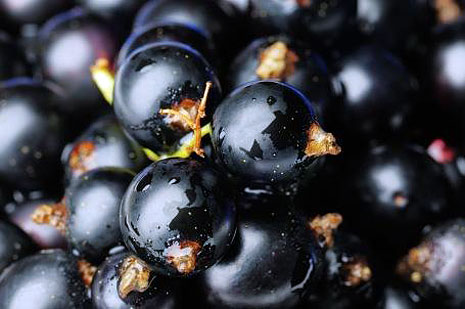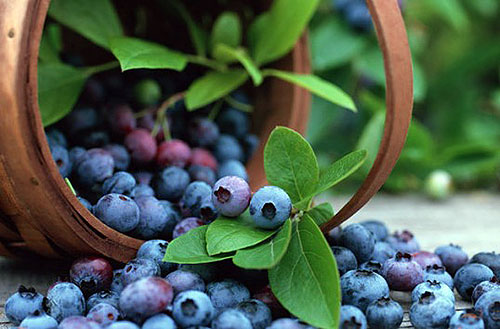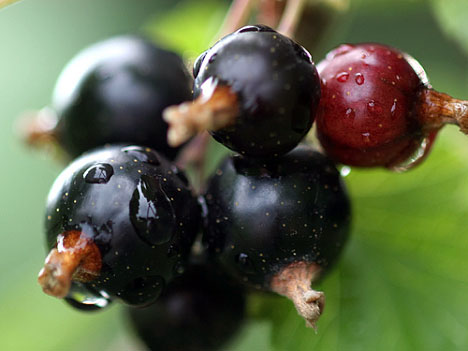Currant shrub is a native of Tibet, it is widely spread and cultivated in the Europe for about 400 years. It was first planted in the Netherlands, Denmark, Sweden and northern Germany, where it grows in the woods, often in hilly areas, with abundant annual precipitation, having a high resistance to frost.
In the wild, currants prefer wetter and cool temperate areas, protected from strong winds. The fruit is harvested for medicinal purposes, as well as the leaves, immediately after the fruit is fully ripened, to hasten fruit bud differentiation in the following year. Early spring can yield currant buds and mature fruit after processing retain seeds.
Currently, 98% of the cultivated area is concentrated in Europe, where annual production is of 330,000 tons of currant fruit, especially in Germany, England, Norway and Austria.
In the kitchen gardens currants are cultivated with success, in sunny or lightly shaded areas, on the paths, near fences or plant trees interspersed among existing trees.
Black currant
Black currant shrub is 1-1.5 meters tall, strongly branched at the base, with erect stems, vigorous. The root system is relatively shallow, at depths of only 10-30 cm, branched only on the surface of the crown projection. The leaves have toothed edges, slightly hairy on the underside and furnished with numerous glands point, yellow and fragrant. The flowers are small, yellow-green and red on the outside.
Early spring flowering occurs more frequently in April-May, and lasts 14-15 days, starting from the bunches to the top. Approximately 60 days after fertilization of flowers, fruit maturation takes place, in the second decade of July. Berry fruits are spherical with a diameter of 0.5-1 cm, black, with scented and pleasant taste, aromatic and slightly sour.
Fruits contain three times more vitamin C than oranges
Black currant fruits are among the richest in vitamin C (150-200 mg per 100 grams of fruit), three times more than oranges. In addition, vitamin C in fruit is very stable, both heat shock, as well as oxidation, due to complex organic substances that inhibit oxidative processes. The enzyme is filled with provitamin A, B complex (B1, B2, B6) and vitamin PP. Due to the high content in anthocyanins, is provided the role played by vitamin P.
In addition to vitamins, the analysis pointed out the presence of large amounts of sugar (10-14%), giving the sweet taste of the fruit, and protein (0.9%), pectin, tannins and a green essential oil (up to 0.2%), consisting of terpenic hydrocarbons.
Worth mentioning that the fruit is also rich in mineral salts of potassium (870 mg), calcium (60 mg), magnesium (17 mg), iron, sodium, phosphorus, zinc and other micronutrients.
Caloric intake of 56 kcal per 100 g fruit completes the nutritional value, making it a therapeutic fruit.
The leaves contain vitamin C, rutozizi, tannins, essential oil and potassium salts. Currant seeds contain gamma-linoleic acid, a fatty acid of high nutritive value.
An “elixir of youth”
The fruits, as well as leaves and buds are appreciated for their medicinal virtues. Four centuries ago (1614), currant leaves were used against kidney stones and urinary retention.
List of the therapeutic properties of currant fruit was presented in the eighteenth century by the abbot Bailley Montaran from Dijon Monastery, which highlight its wonderful tonic virtues, general and nervous, considering currant as an “elixir of youth” with effects for prolonged youth and health.
Gradually, were found more medicinal virtues. In particular, the fruit has diuretic properties, depurative, pectoral, sudorific, stomachic, anti-diarrheal, anti-cramps, astringent, hypotensive, antirheumatic, antigout inflammatory, vermifuge, antiscorbutic, antihemorrhagic, anti-infective, healing, fortified, energy, snacks and drinks.
The leaves have a high diuretic capacity, antirheumatic action and have uricosuric effects, favoring the elimination of purines and uric acid.
Good results in kidney disease
Experiments have shown multiple health benefits of the black currant fruit, leaves and buds that can prevent and combat a variety of unhealthy conditions:
– Cardiovascular disease (prevents heart failure and stroke because of the high content of vitamin C and antocianosides, increases strength of fragile blood capillaries, reduces hypertension, atherosclerosis, cerebral arteritis, increasing the poor peripheral circulation caused by menopause, cleans the blood of toxins, waste and cholesterol);
– Respiratory and lung disease (cough, influenza, angina, laryngitis, allergic rhinitis and recurrent nasopharyngitis, fever, asthma, chronic bronchitis, pneumonia, emphysema, excessive serous, inhibit the growth of bacteria and influenza virus);
– Renal disease (kidney stones, kidney inflammation and infection, nephritis, pyelonephritis, dropsy, contribute to excessive reduction of urea and uric acid);
Continue to the next page to read the full article:



